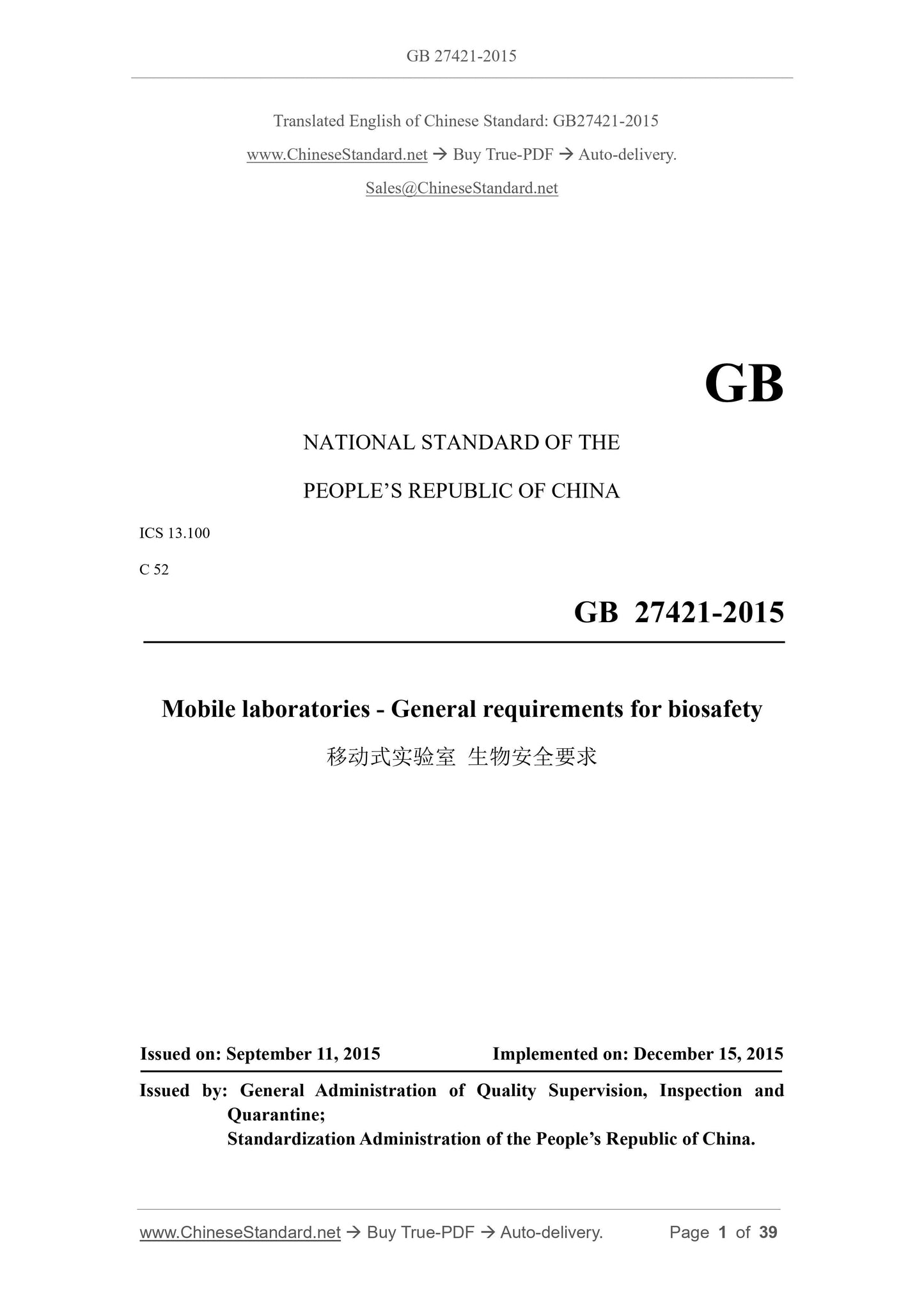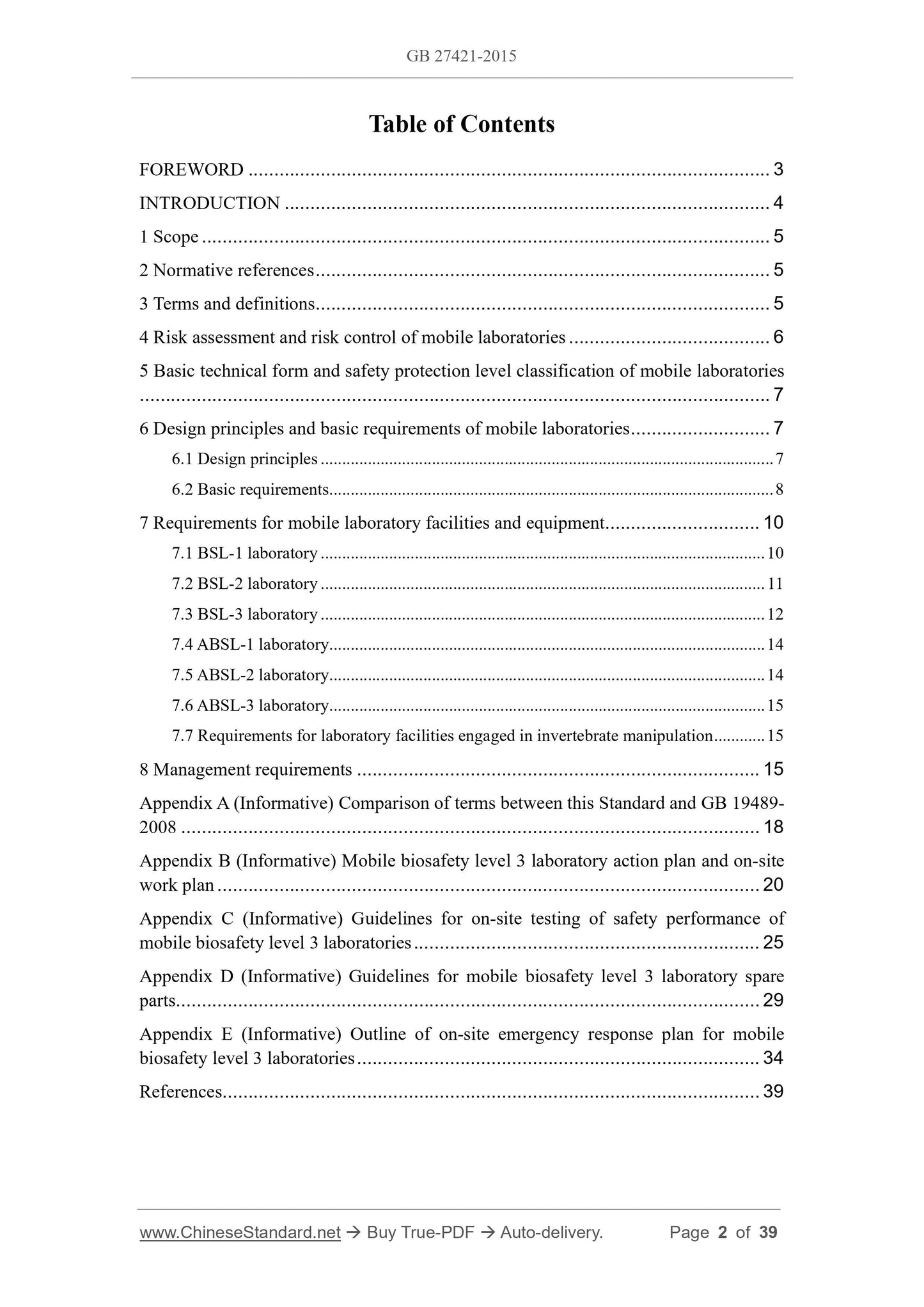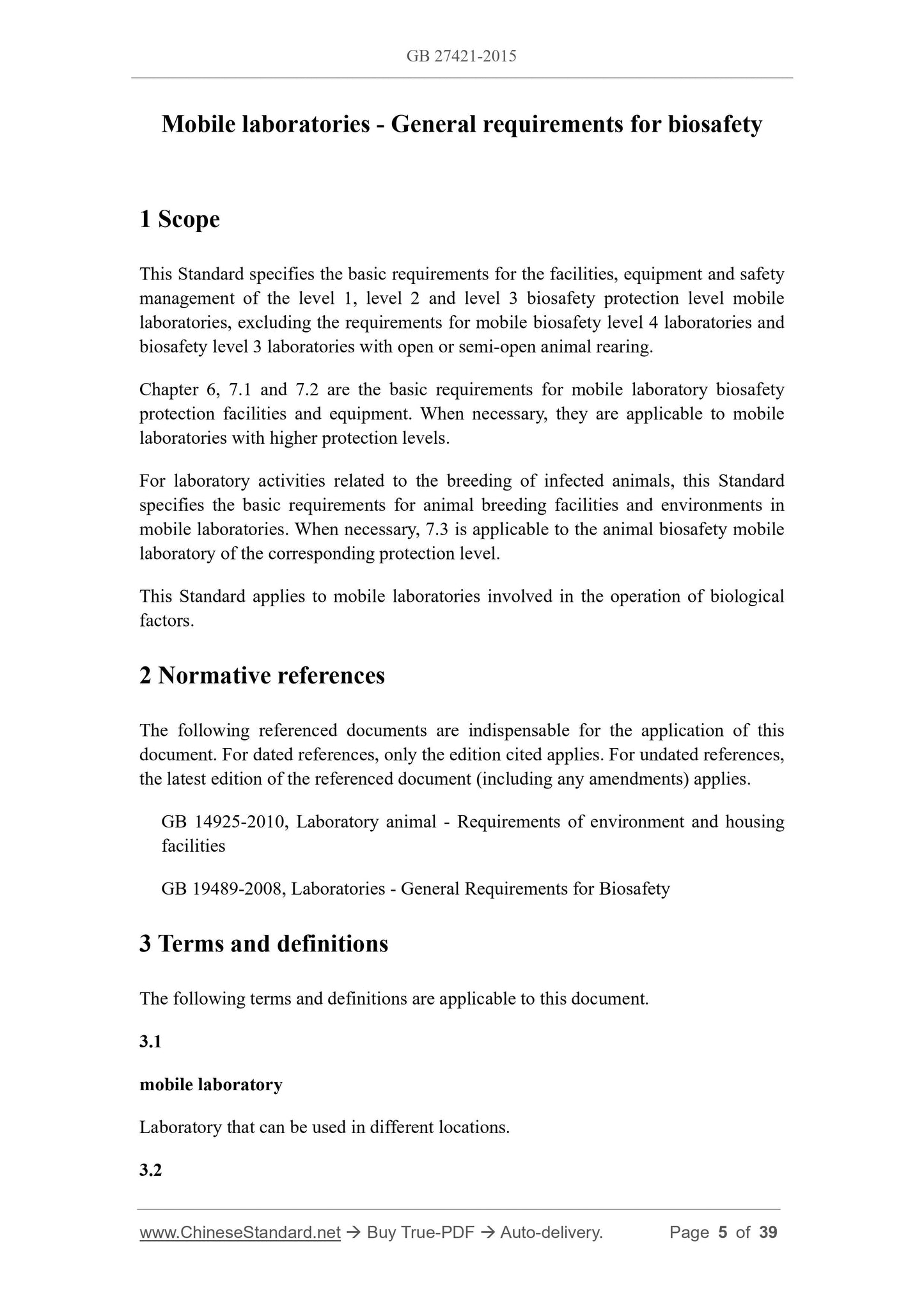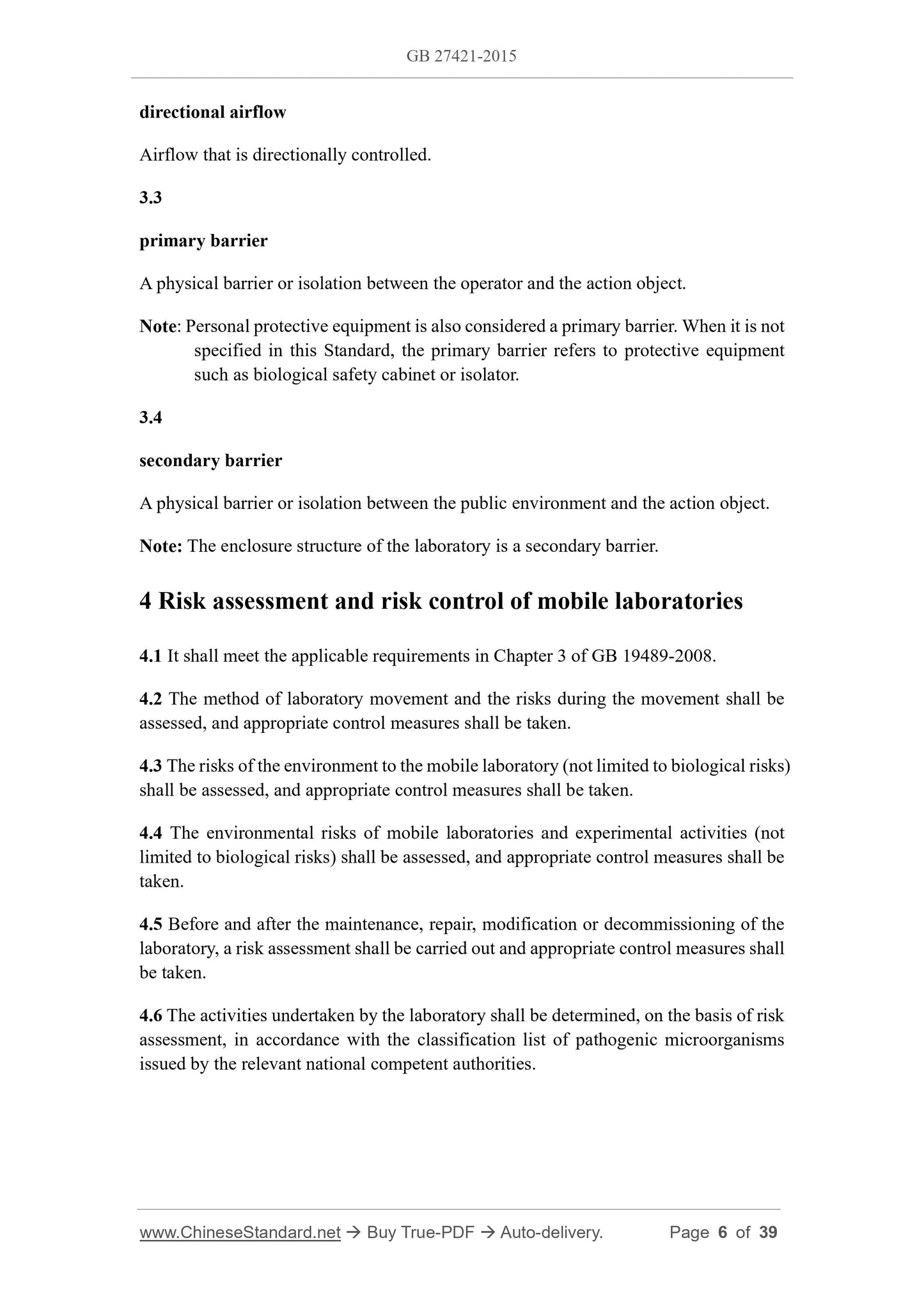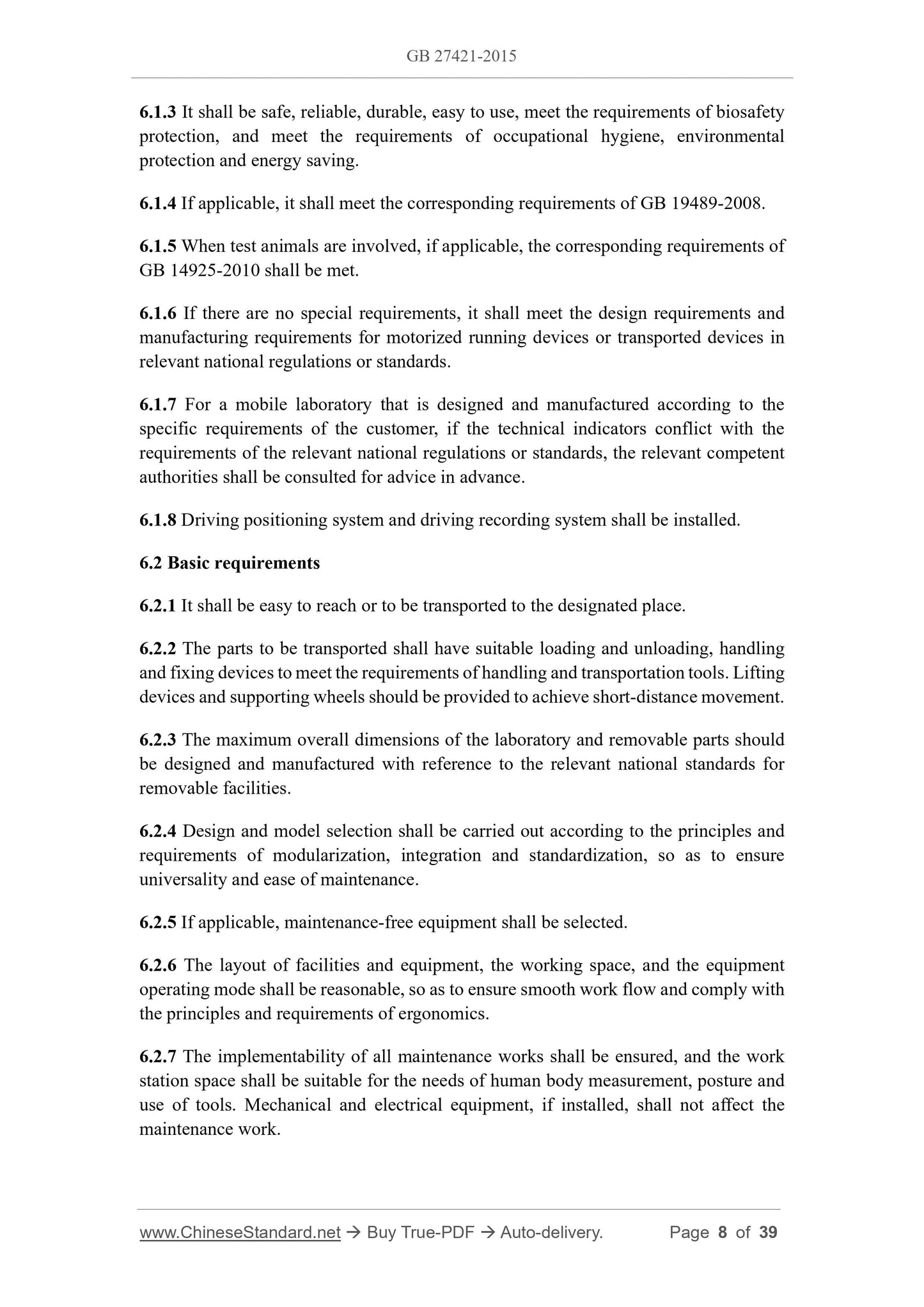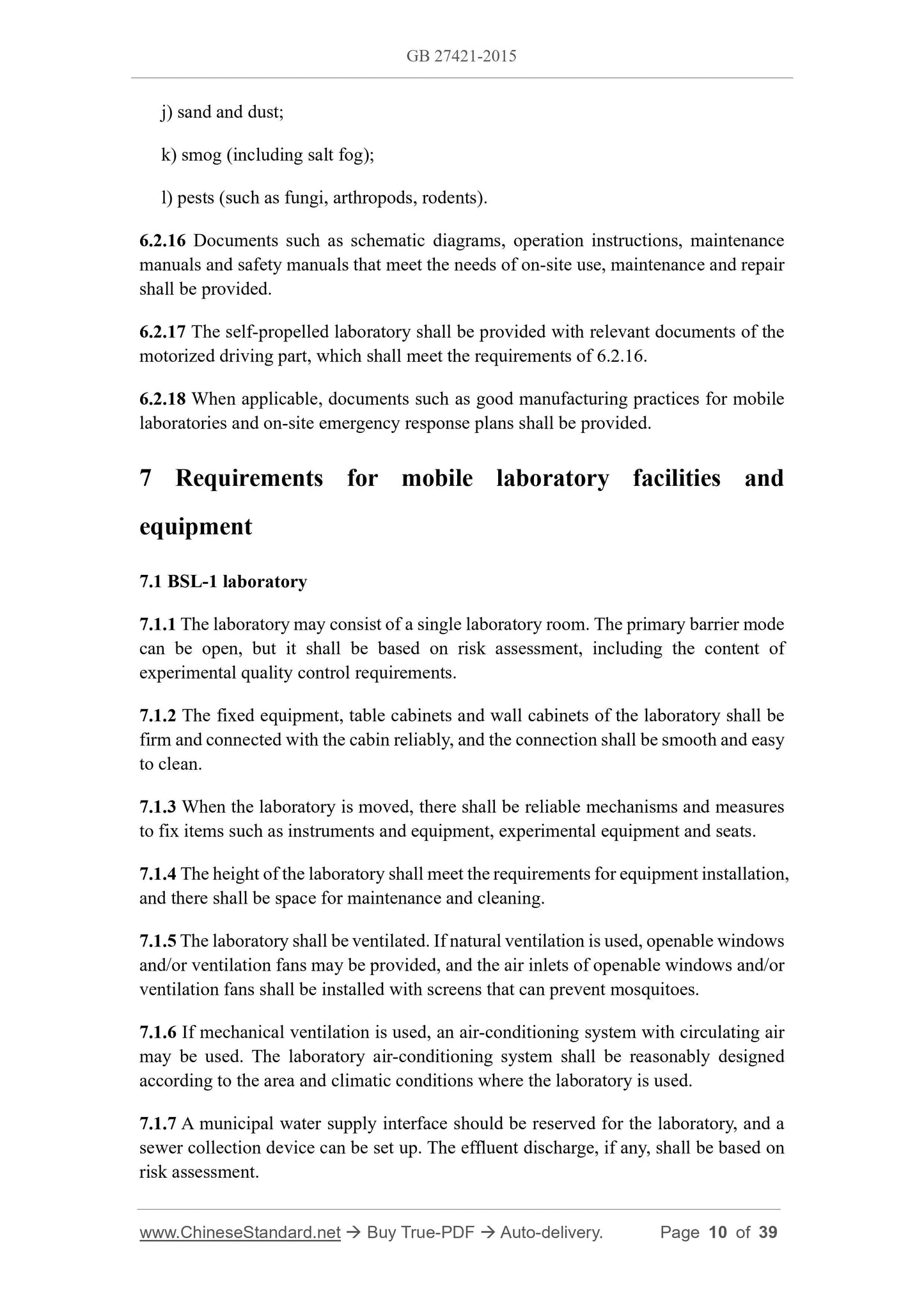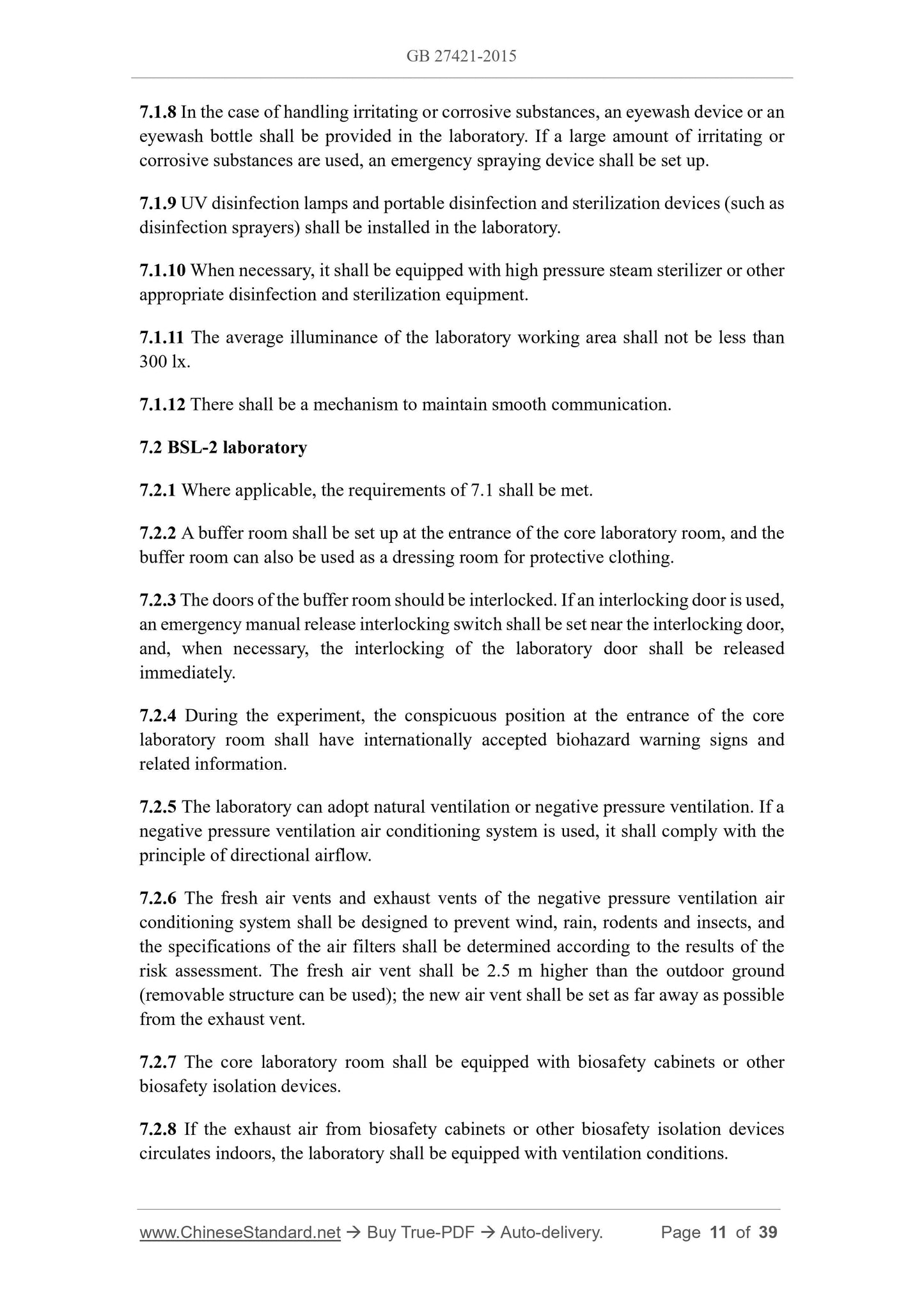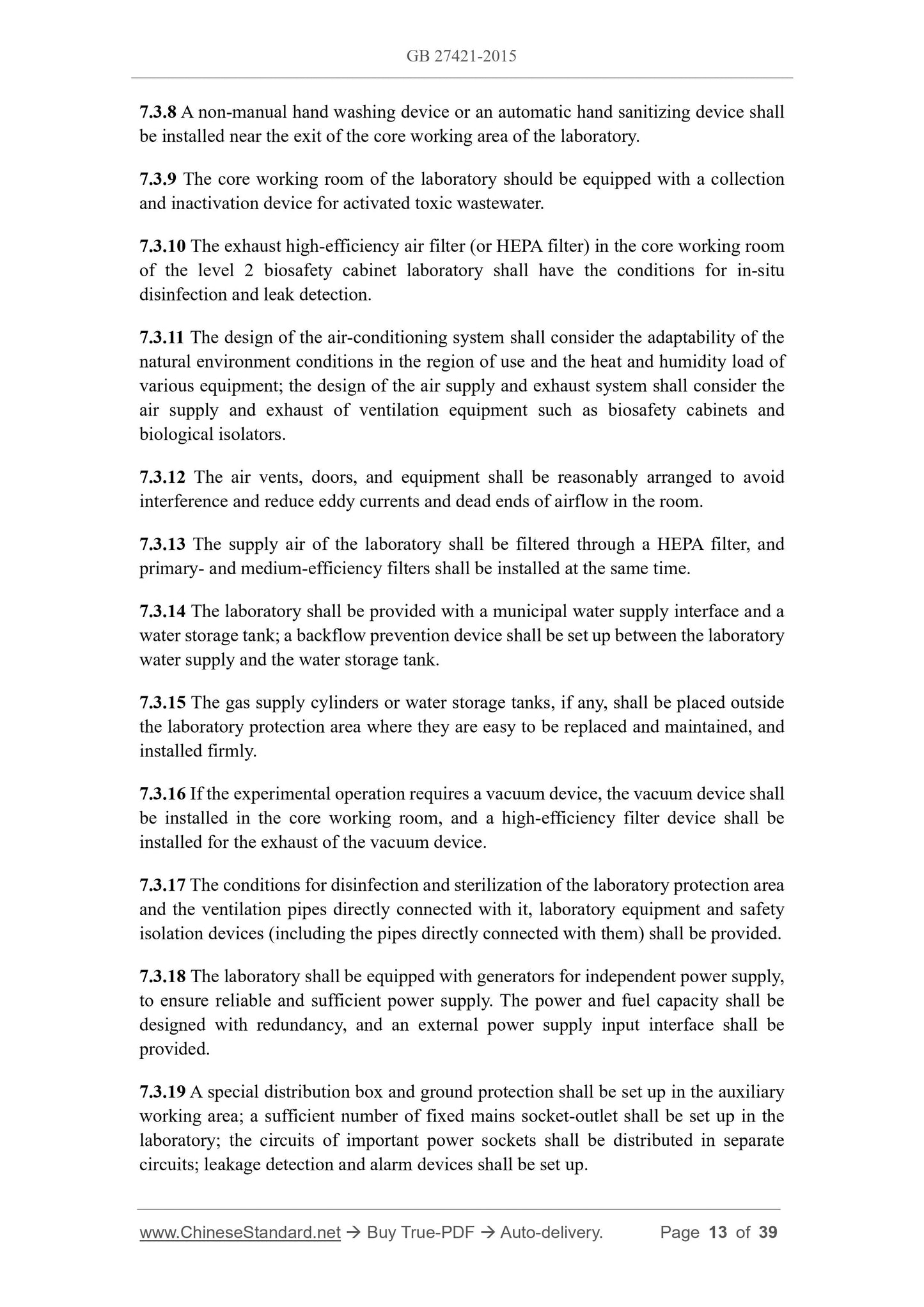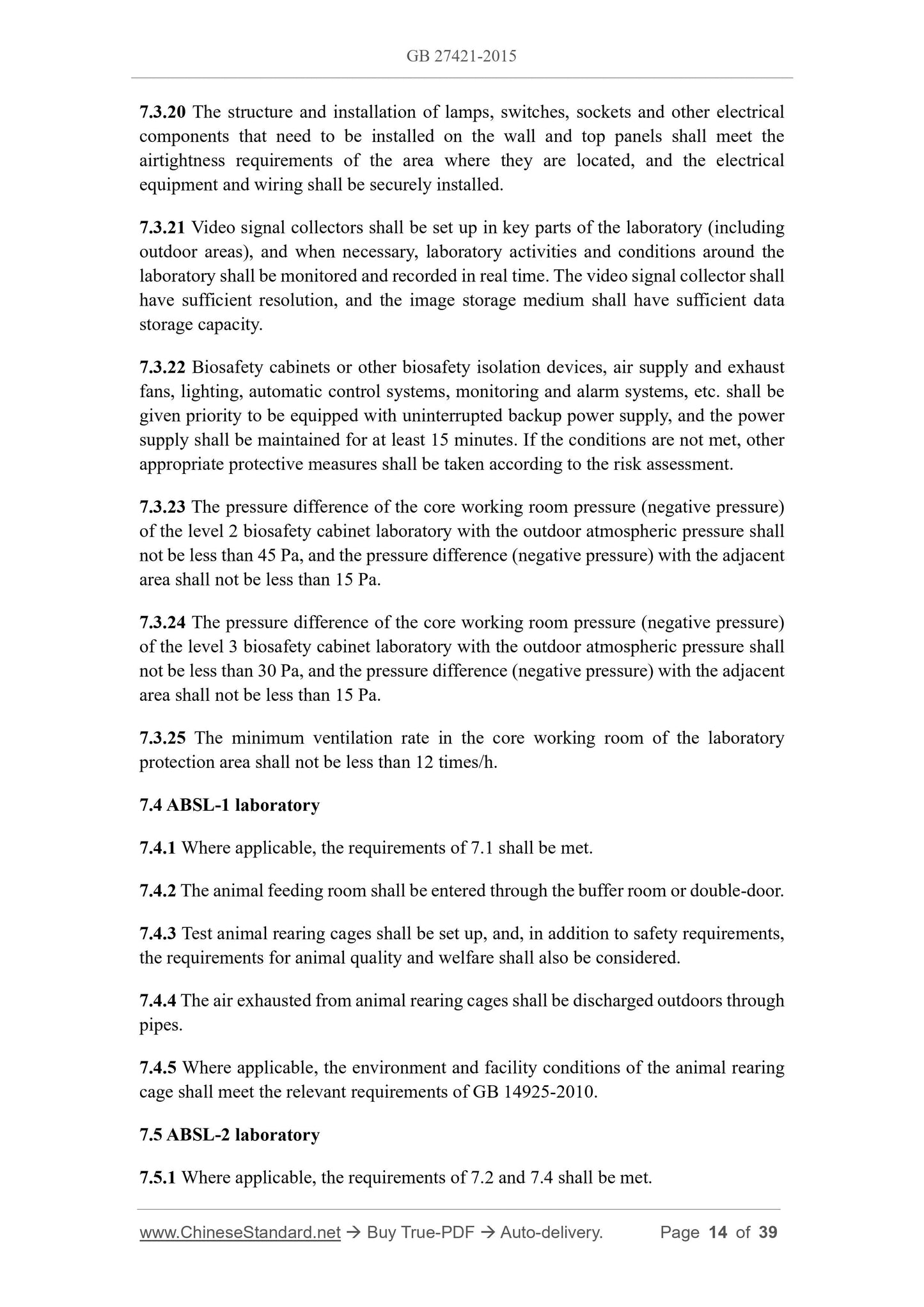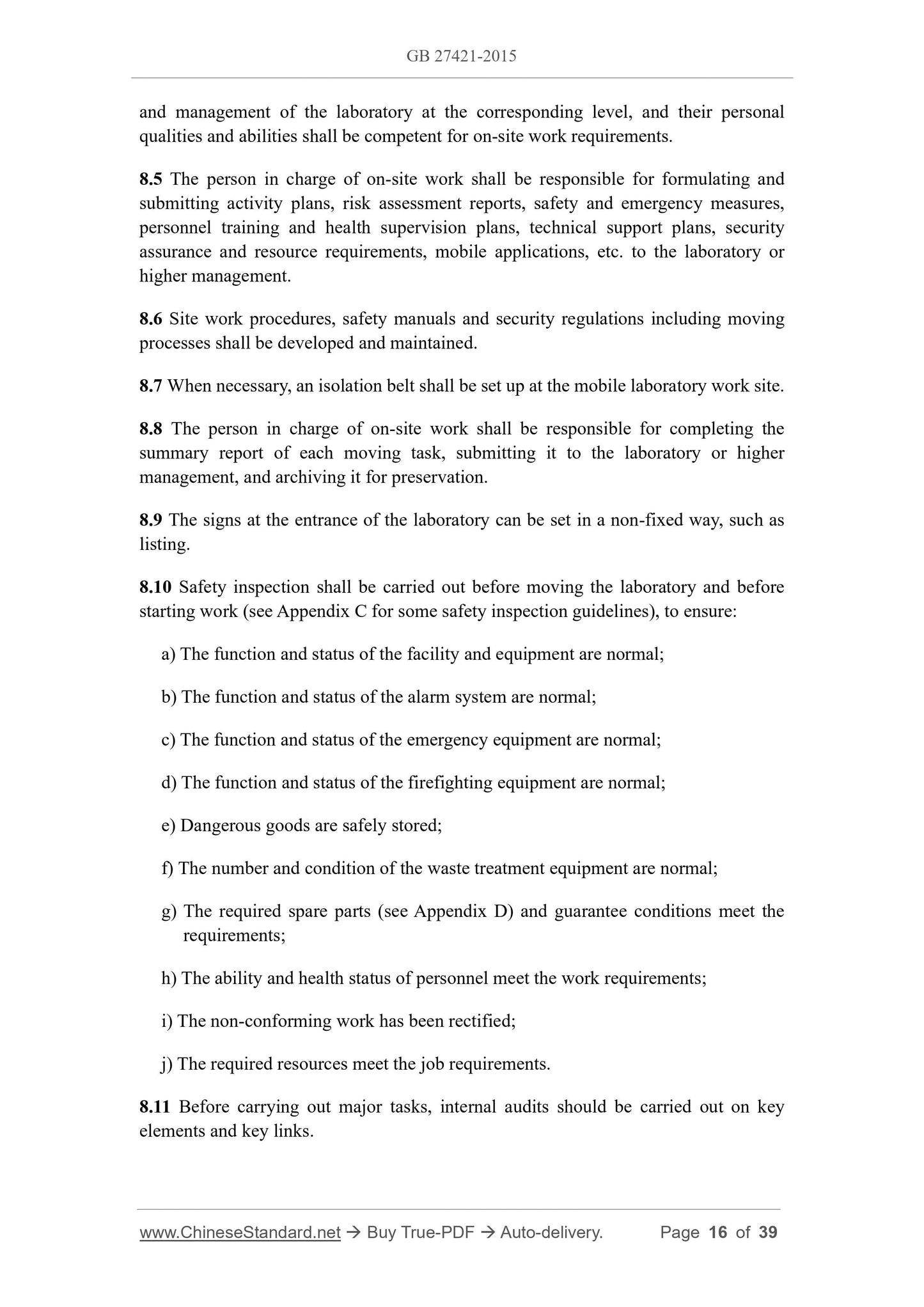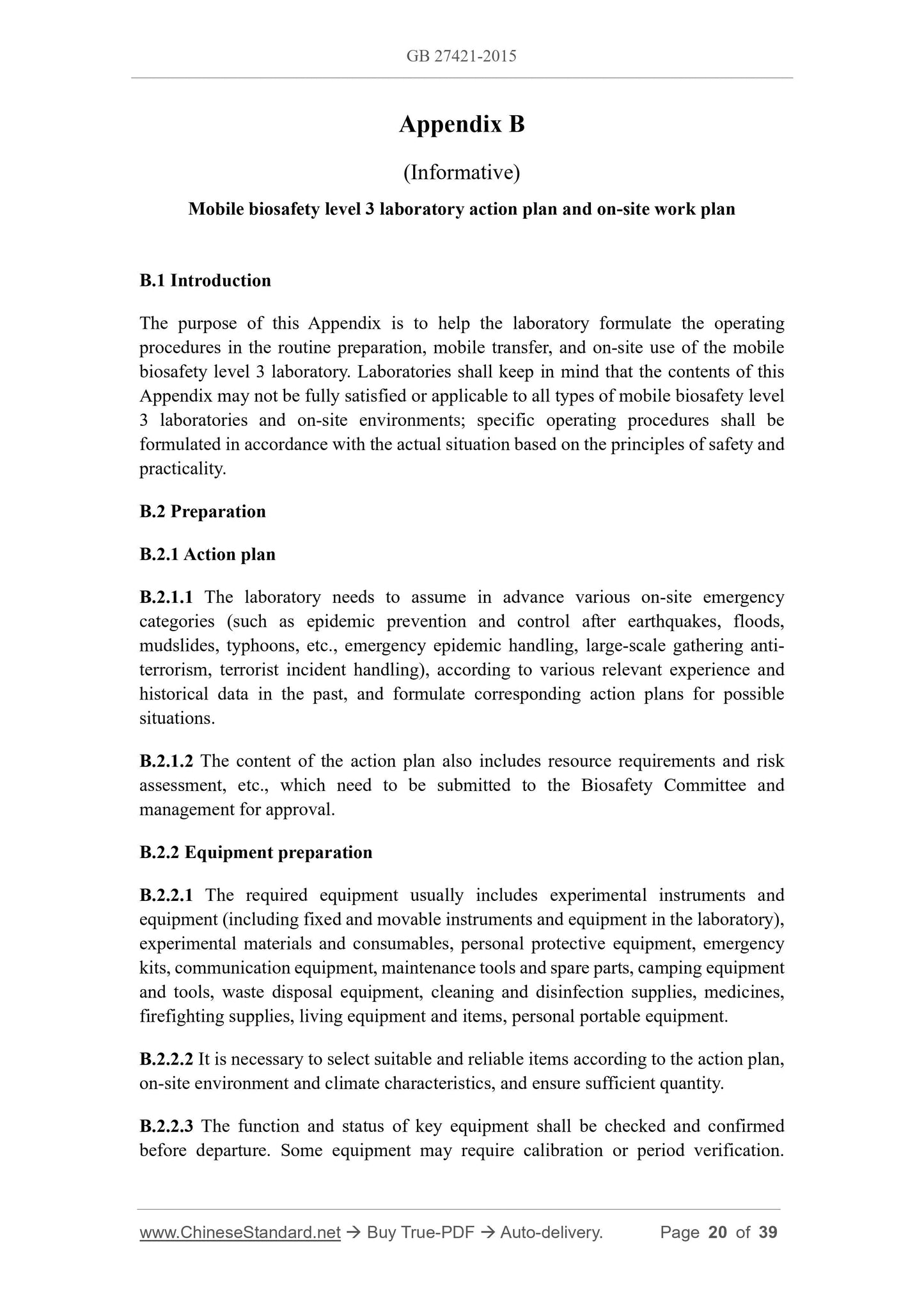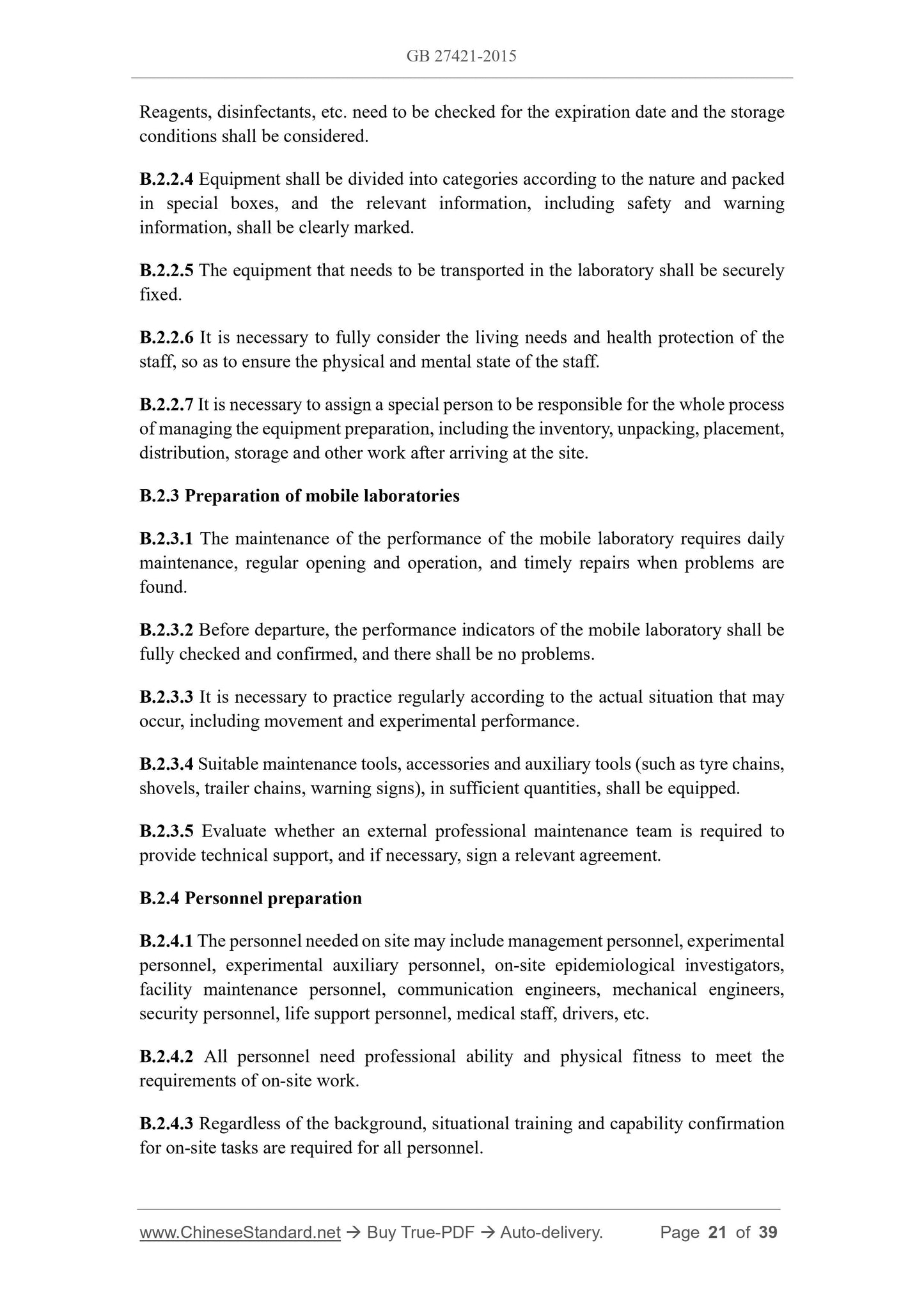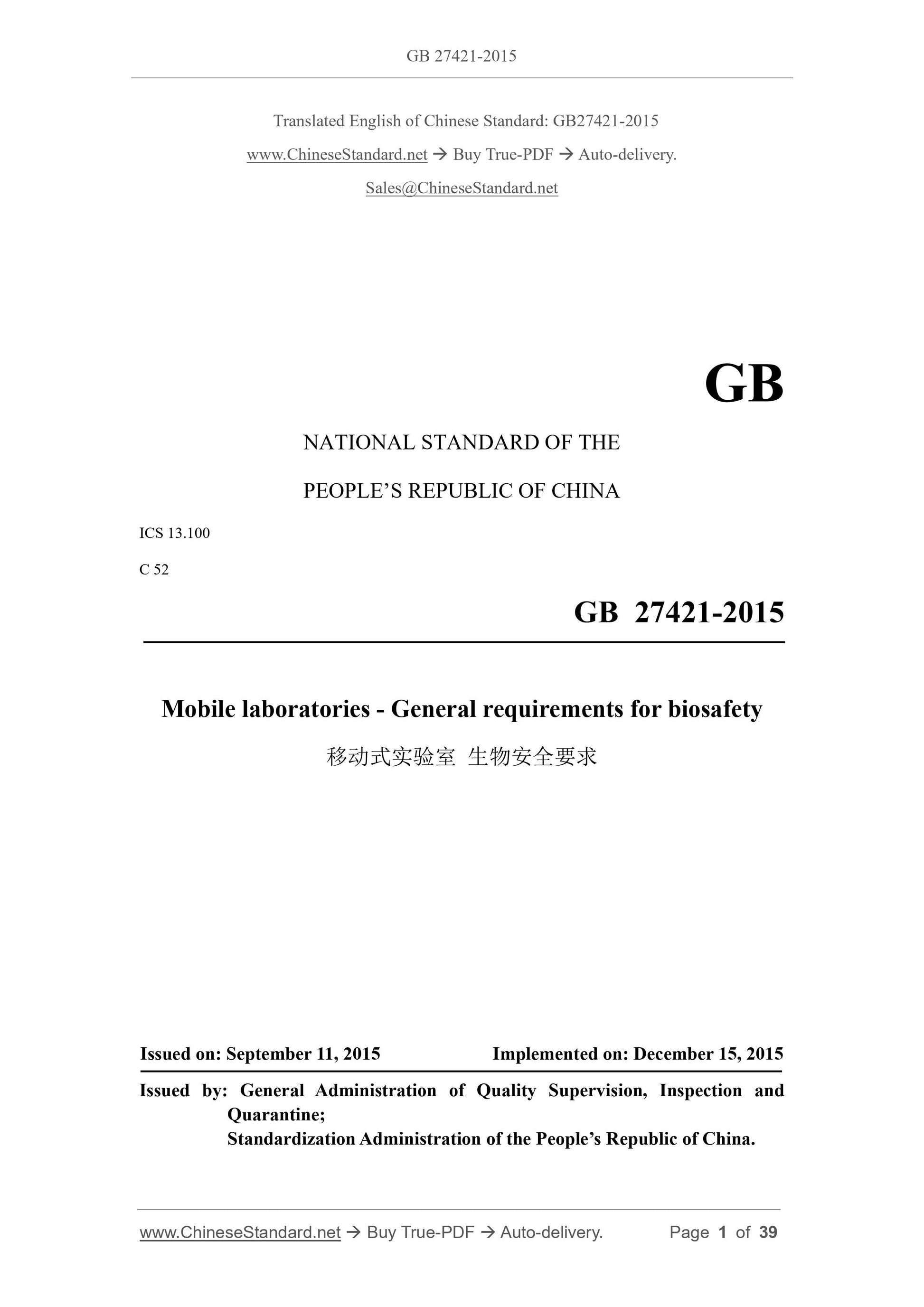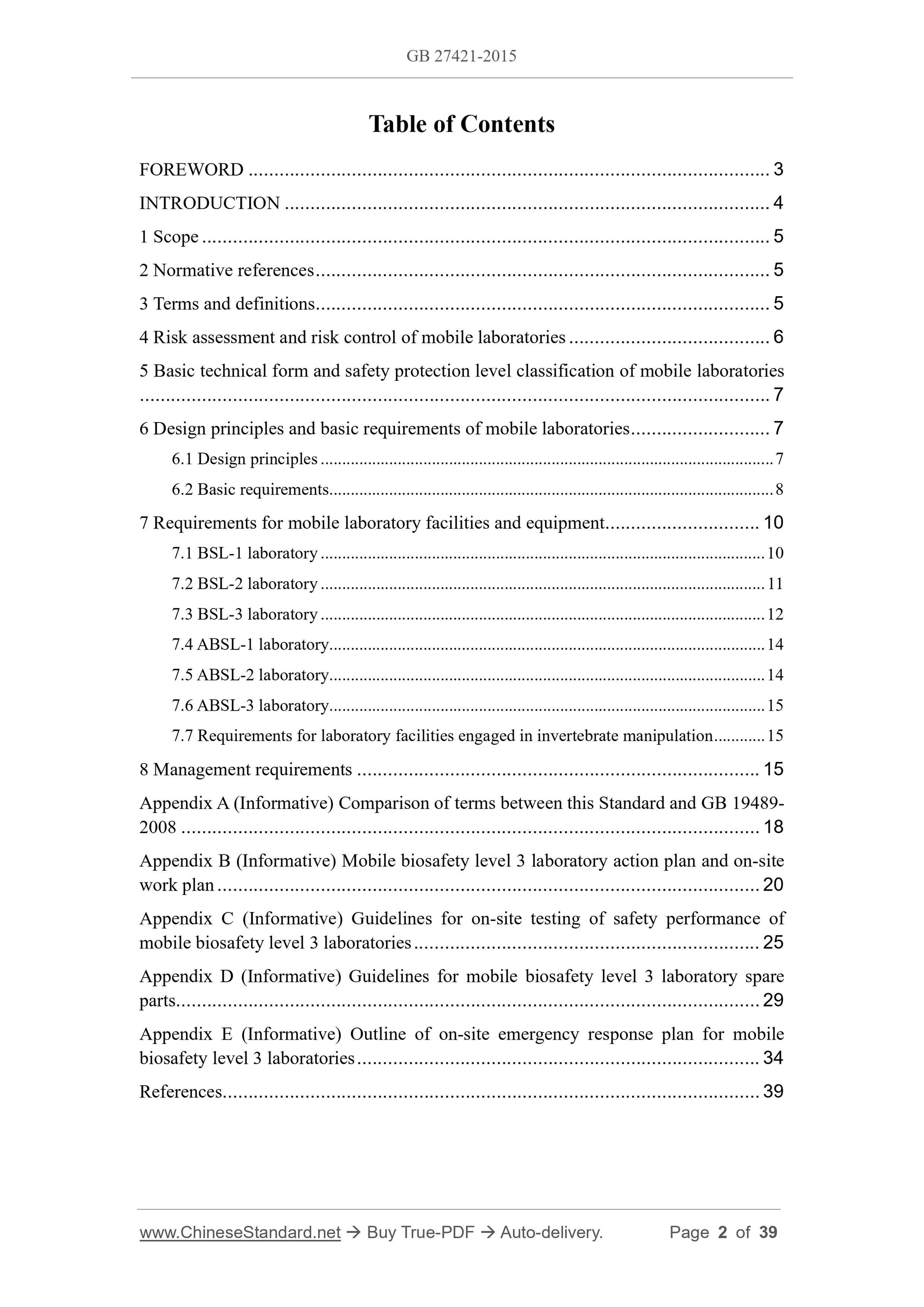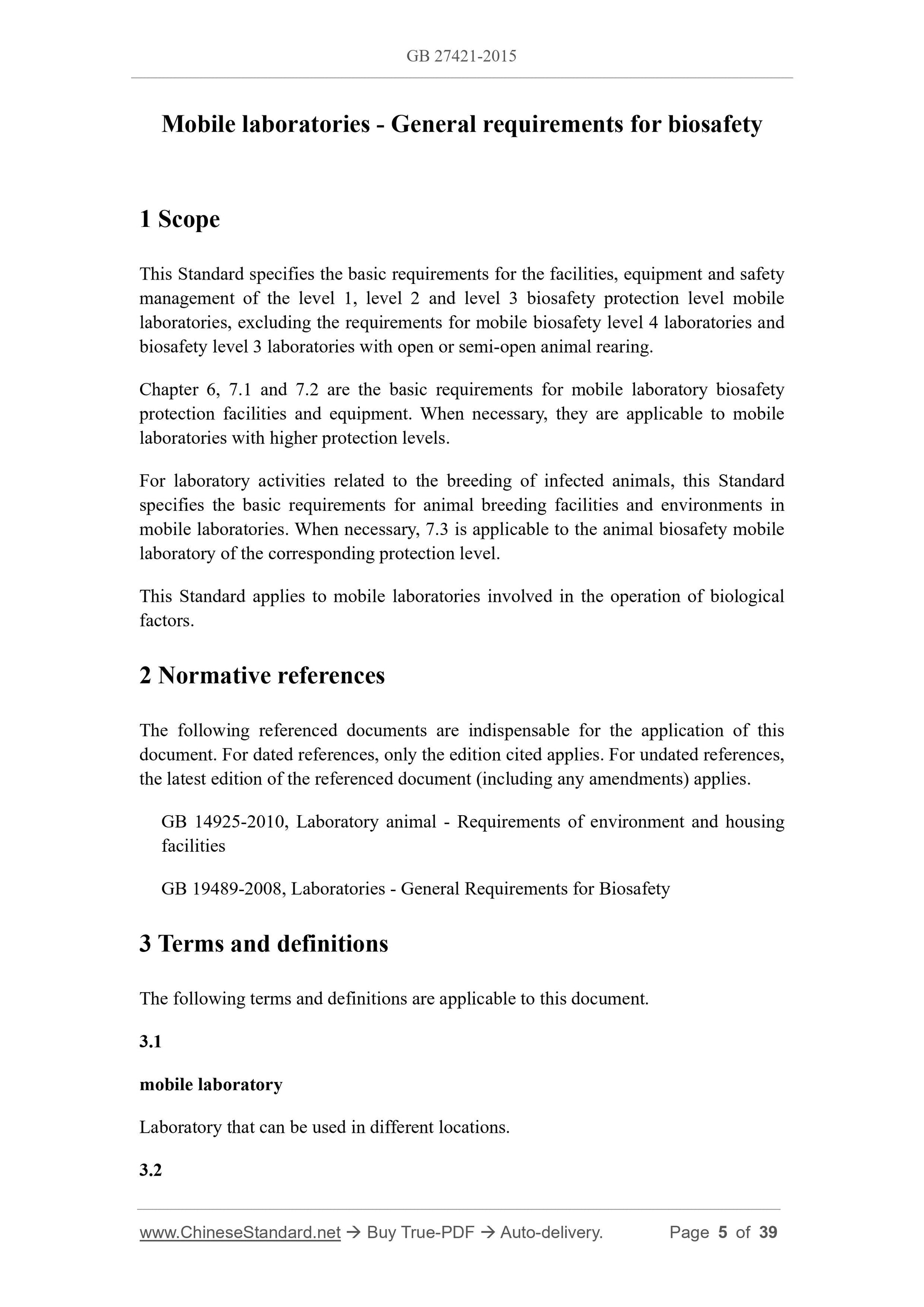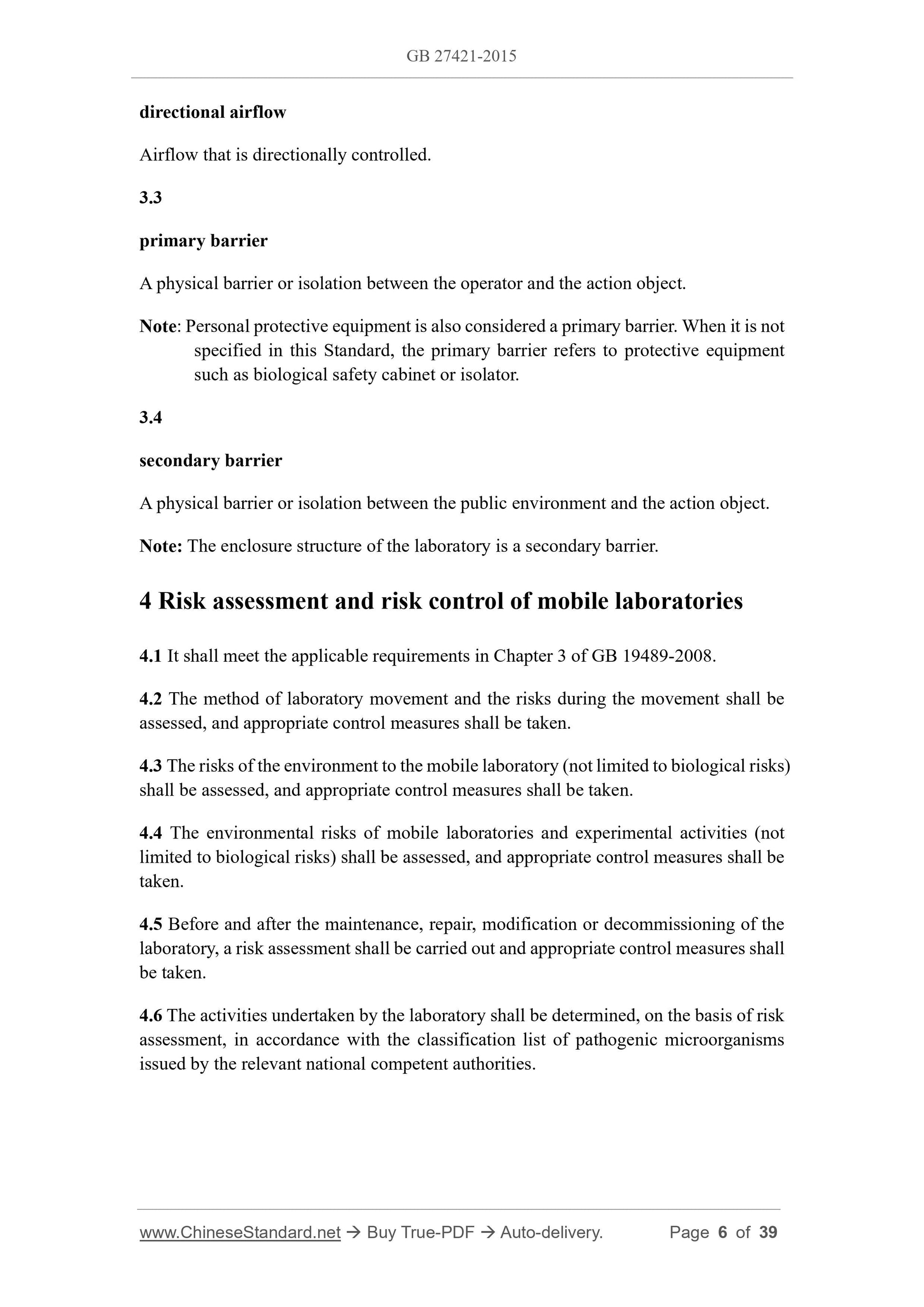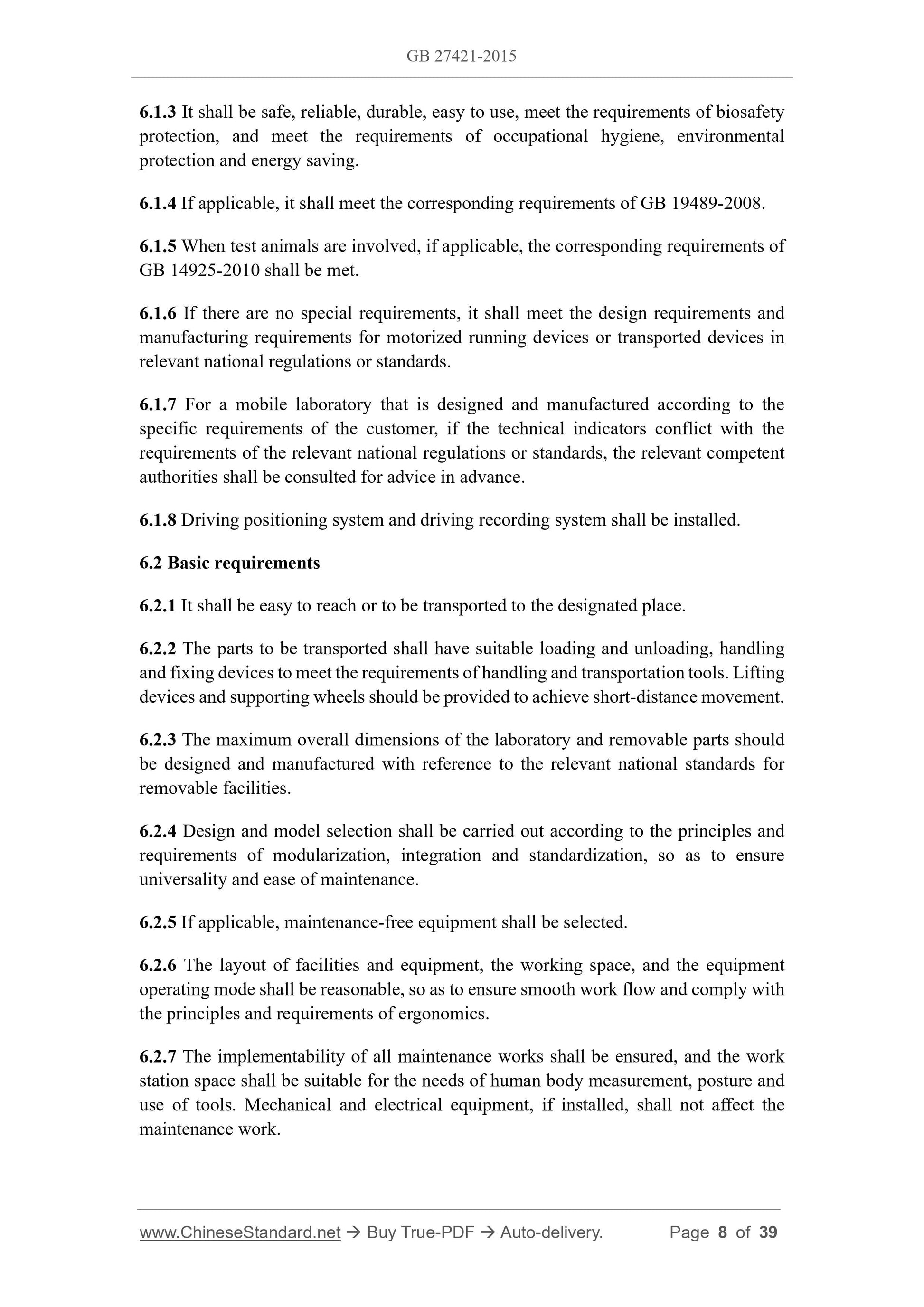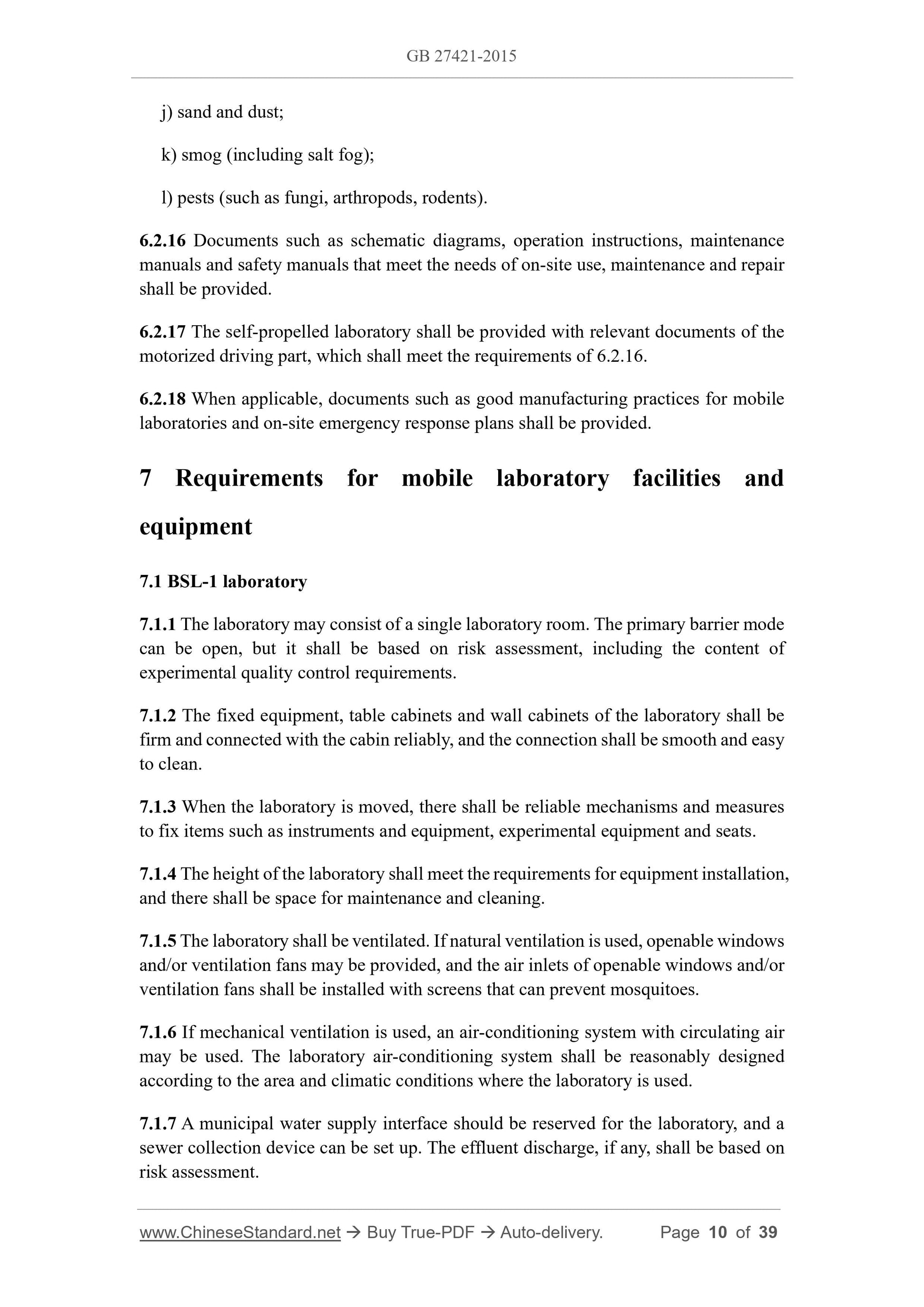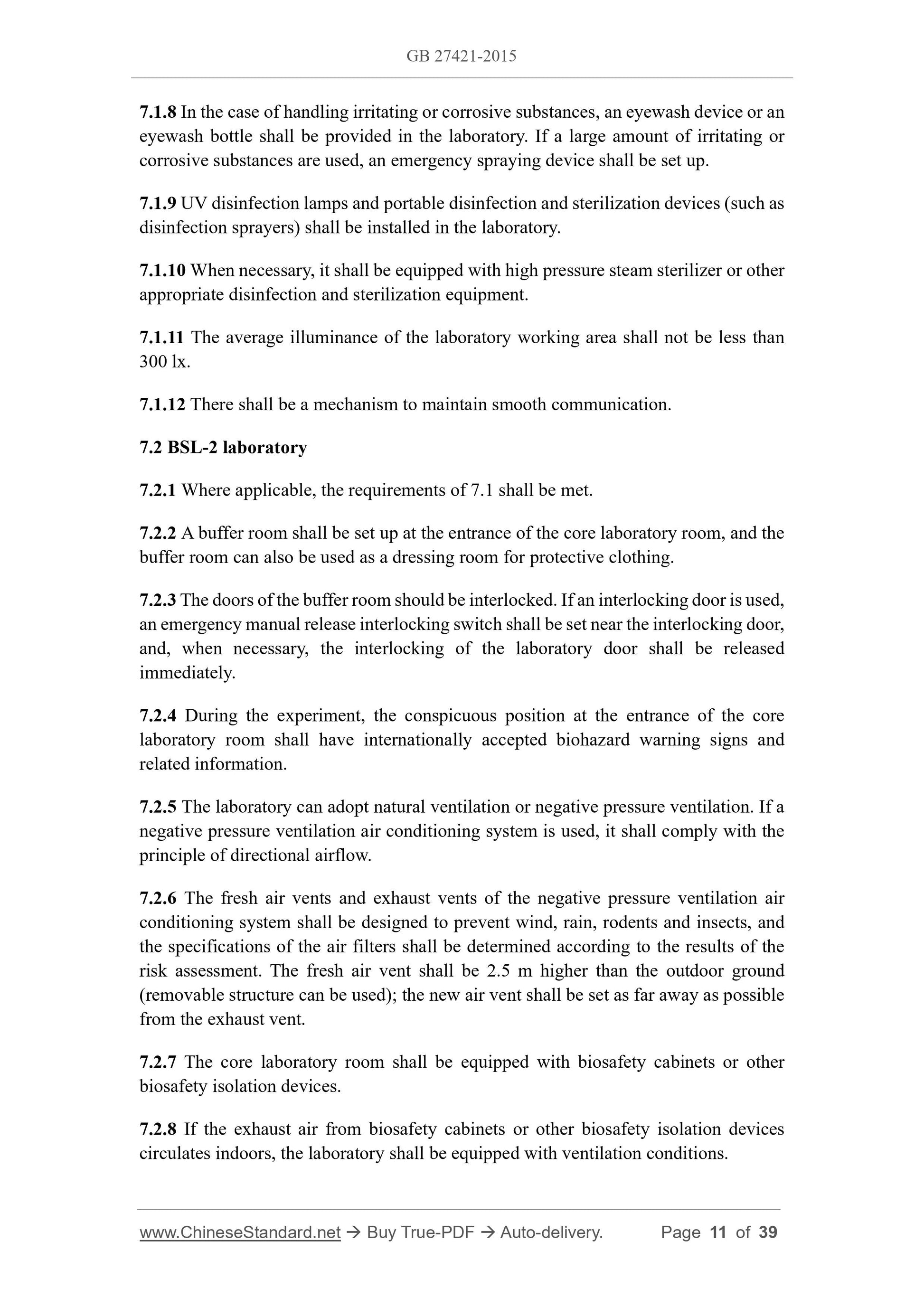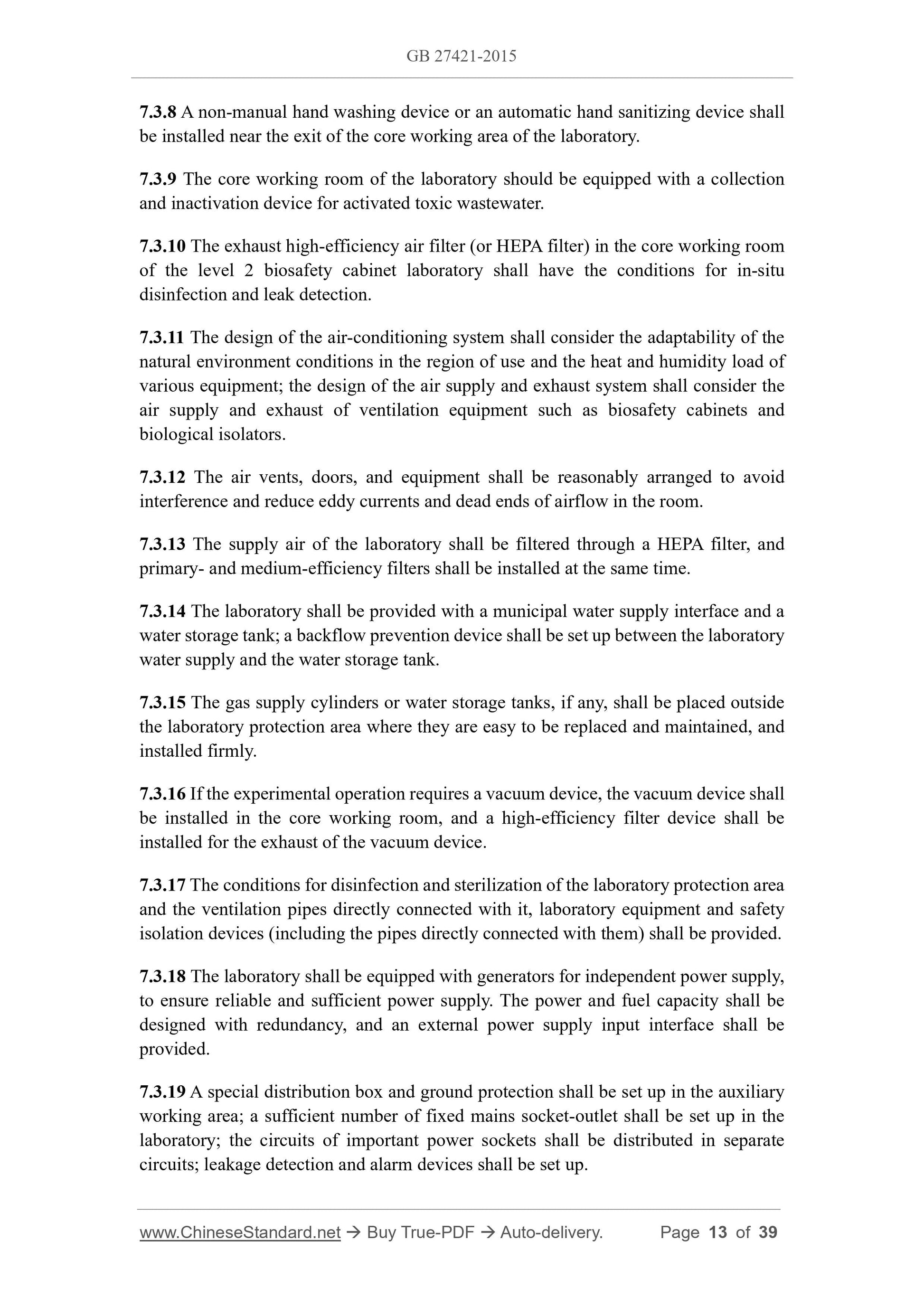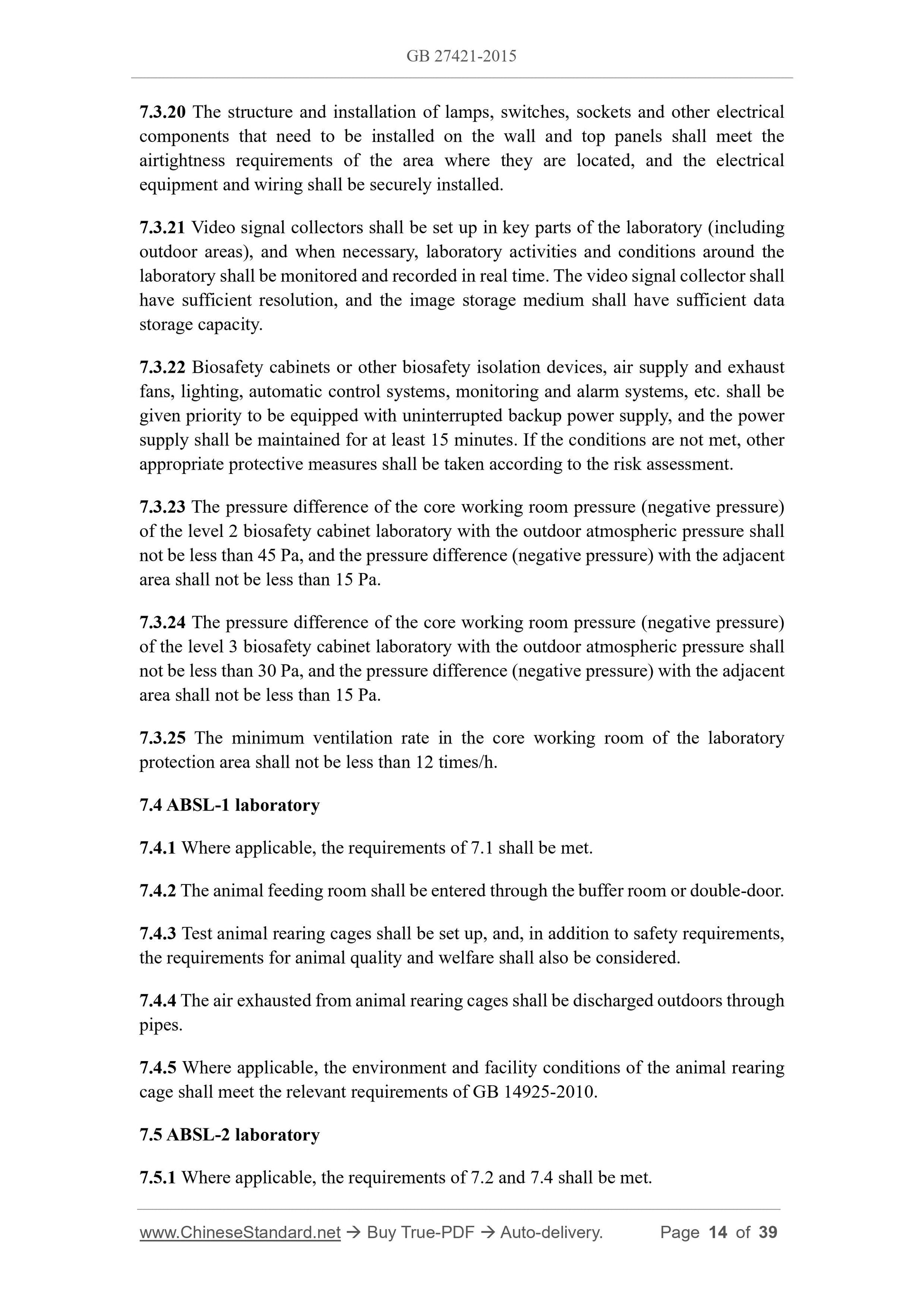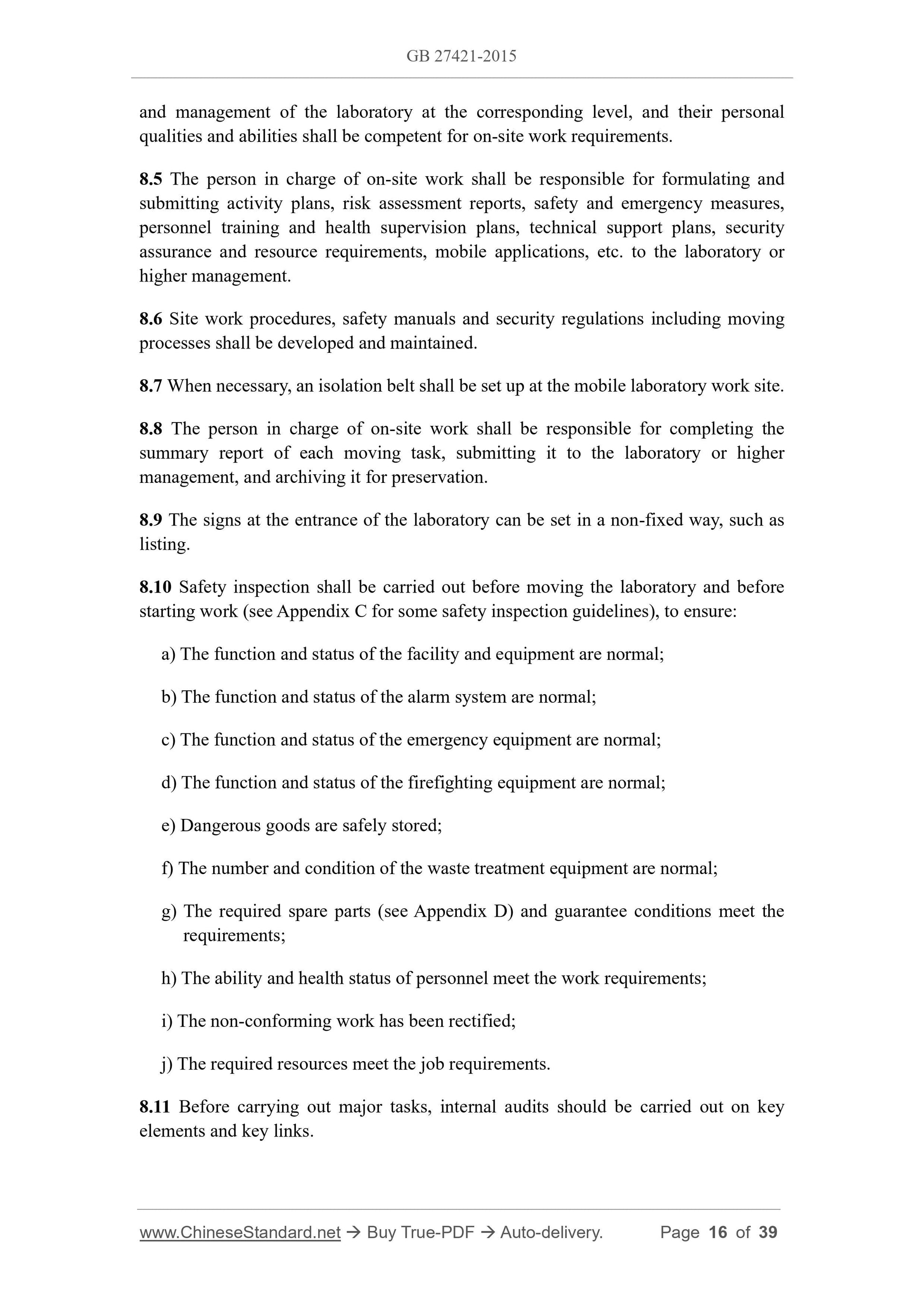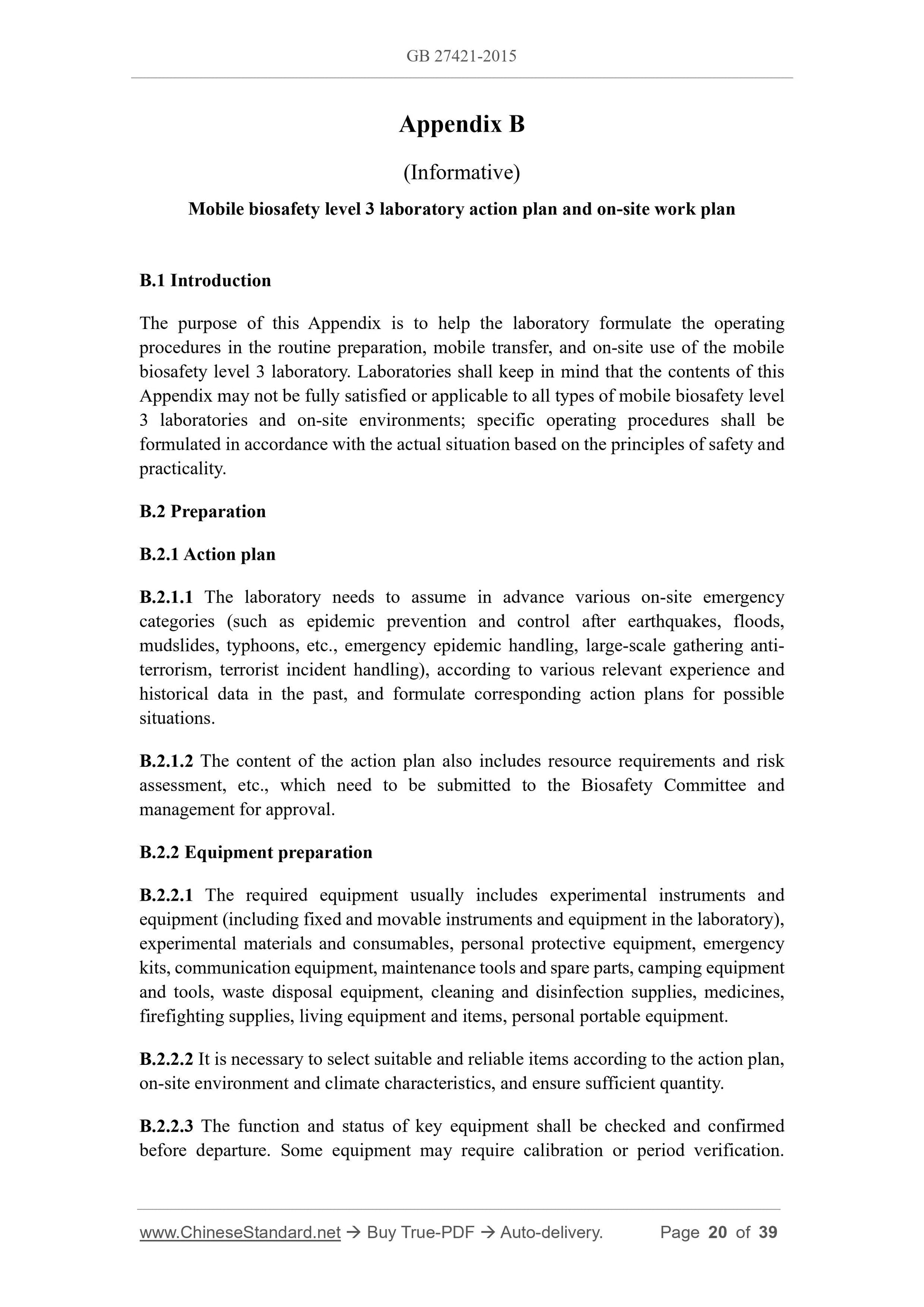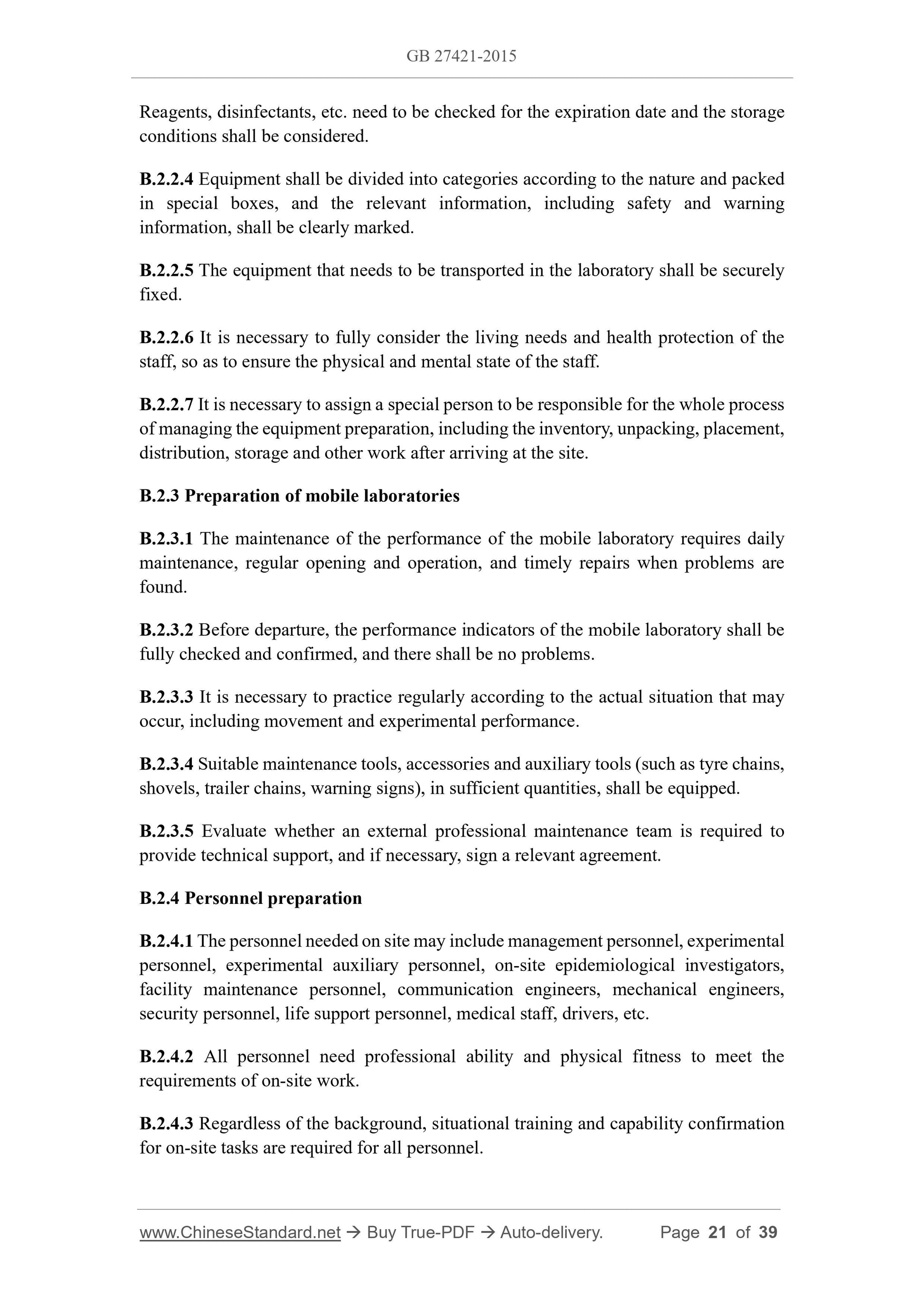1
/
of
12
www.ChineseStandard.us -- Field Test Asia Pte. Ltd.
GB 27421-2015 English PDF
GB 27421-2015 English PDF
Regular price
$380.00
Regular price
Sale price
$380.00
Unit price
/
per
Shipping calculated at checkout.
Couldn't load pickup availability
GB 27421-2015: Mobile laboratories - General requirements for biosafety
Delivery: 9 seconds. Download (and Email) true-PDF + Invoice.Get Quotation: Click GB 27421-2015 (Self-service in 1-minute)
Newer / historical versions: GB 27421-2015
Preview True-PDF
Scope
This Standard specifies the basic requirements for the facilities, equipment and safetymanagement of the level 1, level 2 and level 3 biosafety protection level mobile
laboratories, excluding the requirements for mobile biosafety level 4 laboratories and
biosafety level 3 laboratories with open or semi-open animal rearing.
Chapter 6, 7.1 and 7.2 are the basic requirements for mobile laboratory biosafety
protection facilities and equipment. When necessary, they are applicable to mobile
laboratories with higher protection levels.
For laboratory activities related to the breeding of infected animals, this Standard
specifies the basic requirements for animal breeding facilities and environments in
mobile laboratories. When necessary, 7.3 is applicable to the animal biosafety mobile
laboratory of the corresponding protection level.
This Standard applies to mobile laboratories involved in the operation of biological
factors.
Basic Data
| Standard ID | GB 27421-2015 (GB27421-2015) |
| Description (Translated English) | Mobile laboratories - General requirements for biosafety |
| Sector / Industry | National Standard |
| Classification of Chinese Standard | C52 |
| Classification of International Standard | 13.100 |
| Word Count Estimation | 26,232 |
| Date of Issue | 2015-09-11 |
| Date of Implementation | 2015-12-15 |
| Quoted Standard | GB 19489-2008; GB 14925-2010 |
| Regulation (derived from) | National Standard Announcement 2015 No.25 |
| Issuing agency(ies) | General Administration of Quality Supervision, Inspection and Quarantine of the People's Republic of China, Standardization Administration of the People's Republic of China |
| Summary | This Standard provides for primary, secondary and tertiary levels of bio-security laboratory basic requirements of mobile facilities, equipment and safety management, does not include the four mobile biosafety laboratory and animal rearing open or semi-open three laboratory biosafety requirements. Chapter 6, as well as 7.1 and 7.2 are basic requirements for mobile biosafety laboratory facilities and equipment needed for a higher level of protection of mobile real face room. For animal feeding and infection associated laboratory activities, this standard specifies the basic requirements within the mobile laboratory animal breeding facilities and the environment. When necessary, 7.3 for the appropriate level of protection of animal biosecurity mobile laboratory. This Standard applies to biological factors involved in the operation of a mobile laboratory. |
Share
